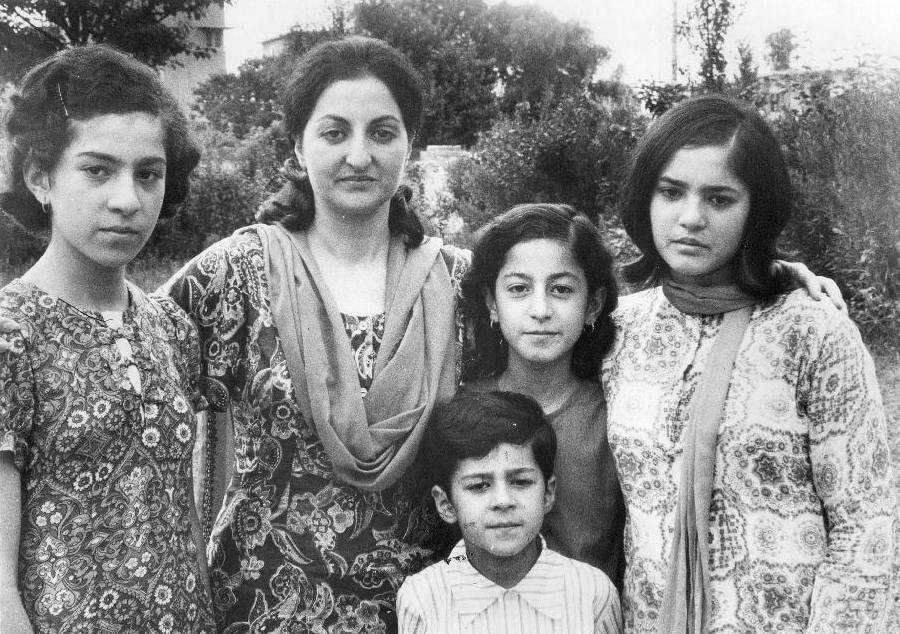
Third Indo-Pakistani War: Post War Problems

Figure 1.-- The Third Indo-Pakistani War led to the separation of East and West Pakistan and the creation of a new state--Bangladesh. Even after the fighting ceased, however, there were major problems. The war created large numbers of refugees. In addition, there were problems with the POW exchanges. And the problems did not stop here. The wives of Pakistani POWs encountered major problems living without their husbands. The press caption here read, "Rawalpindi, Pakistan: Mrs. Freda Shah and her children. Like other activist wives of prisoners of war, Mrs. Shah is the object of scorn and dismay in the rigid social atmpspherte of her Moslem country." The photograph was dated July 7, 1973. Notice that the woman and her daughters are not wearing head scarves. Today they would risk attack in the streets dressed like that.
|
|
The Third Indo-Pakistani War led to the separation of East and West Pakistan and the creation of a new state--Bangladesh. Even after the fighting ceased, however, there were major problems. The war created large numbers of refugees. In addition, there were problems with the POW exchanges. And the problems did not stop here. The wives of Pakistani POWs encountered major problems living without their husbands.
Refugees
The war created large numbers of refugees. Some 1 million Bengalis fled across the border into India. After the war they gradually trickled back to East Pakistan, now Bangladesh. Two groups, however were stuckm in Banladesk and Pakistan. There were 150,00-175,000 Bengalis stranded in Pakistan who wanted togo to Bangladesh. And there were 600,00-900,000 non Nengali Musims in Bangladesh. Weare not entire certain waht wa holding this up, but it was presumably the reluctance of the Pakistani Government to recognize the independence of Bangladesh.
POWs
There were problems with the POW exchanges. The major issue slowing down the POW exchanges seems to have been the refugee issues and the Pakistani recognition of Bangladesh..
POW Wives
The wives of POWs in both countries were dufficult because the man in most cases was the bread earner. The wives of Pakistani POWs encountered eve more difficult. Pakistani Muslim women were expected to stay at home, take care of the children, and remain silent. This became very difficult with the family beadwinner gone. Acfew of these women became activists petitioning the Government to arrange for the return of their husbands. Others had to go outside the home to earn a living. This did not sit well with their conservative Muslim neighbors or even family members. One journalist reports from Rawalpindi, "The neighbors of Nasim Khanignore her. Freda Shah's friends are reluctant to phone. Mrs. Naheed Badar stays at home each night yearning to see a motion picture in the city. 'I haven't seen a film in more than a year,' says Mrs Badar, a young sad-eyed mother of two children. 'I must remain indoors and wearv dark clothes. I musn't go out, especially in the evening. I am a widow whose husband is alive.' Mrs. Badar and her two friendsare wives of Pakistani prisoners of war, the group of 93,000 hreld in 50 Indian camps. Since the strife in Bangladesh in December 1971. Althoughh the release of prisoners is a deeply emotional political issue in Pakistan , the activist wives of the P.O.Ws's are ironically the object of scorn and dismay in the rigid social atmosphere of the Moslem nation. 'It is difficult for a woman to survive aloneinn our societyand people can't accept the fact of a woman leaving her home to work or speak publically, 'said Mrs. Shah, the convent educated wife of a Pakistani army engineer. 'Here the only place for a woman is to be hidden. When we demonstrate, when we talk on television, it's unheard of. I still feel guilty about it.' Although the Western concept of women's liberationis remote, the wives of many of the Pakistani prisonershave taken a hesitant, but unmistakable, step toward advancement. [Note: This article was written in 1973, women's ruights appear to have declined in Pakistan in the past few decades as Islamic religious extremists have gained in influence. Read for example about Malala Yousafzai who dared to speak out.] The steps have been taken against relentless social pressure. 'Our society is very flexible and a woman simply can't be alone,' said Mrs. Shah, sitting in the living room of her father's home near downtown Rawalpindi. 'People have a narriow outlook. Even close friends stop calling because you're without a husband. A woman without a husband is nothing.'" [Weinraub]
Sources
Weinraub, Bernard. "Social pressure continues on POW wives in Pakistan," New York Times Service. (August 5, 1973).
HBC

Navigate the Boys' Historical Clothing Web Site:
[Return to Main Third Indo-Pakistani War page]
[Return to Main Indian-Pakistani conflict page]
[Return to Main Indian history page]
[Return to Main Pakistani history page]
[Return to Main 20th century page]
[Introduction]
[Activities]
[Biographies]
[Chronology]
[Clothing styles]
[Countries]
[Bibliographies]
[Contributions]
[FAQs]
[Glossaries]
[Images]
[Links]
[Registration]
[Tools]
[Boys' Clothing Home]
Created: 1:30 PM 10/4/2013
Last updated: 1:30 PM 10/4/2013



